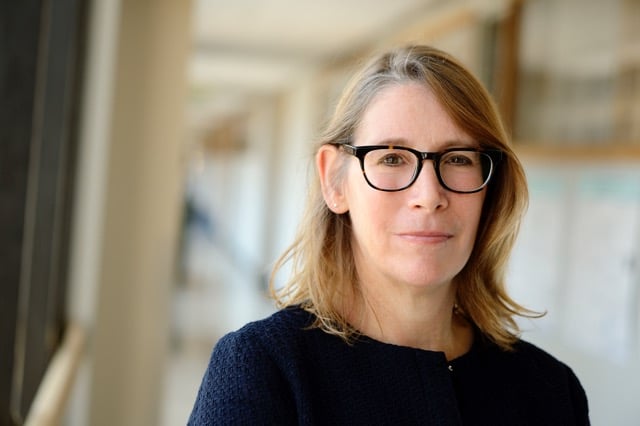Finding the Right Balance

Growing up as one of four daughters in a suburban Boston family, Kathleen Cullen bonded with her engineer father over their shared love of science and physics.
“I would hang out with him and help build Heathkit TVs,” recalls Cullen, who joined the Department of Biomedical Engineering in July as a professor with joint appointments in Otolaryngology and Neuroscience. “From very early on, my parents supported my passion for science.”
Cullen began undergraduate studies at Brown University focused on electrical engineering but was intrigued when she heard that neurons use electricity and started taking neuroscience courses, shifting her focus to bioengineering and neuroscience. She continued neurobiology studies in a doctoral program at the University of Chicago and a fellowship at the Montreal Neurological Institute.
Cullen then joined McGill University in Montreal, where she moved up from an assistant professor in physiology with joint appointments in biomedical engineering, neuroscience, and otolaryngology to a William Dawson Chair and director of the university’s Aerospace Medical Research Unit. If she was going to move anywhere, she says, it was Johns Hopkins. At Chicago, she had met former Johns Hopkins Provost and Otolaryngology Chair Lloyd Minor (who was then doing a research fellowship), beginning a long-standing research collaboration. “I was already well-acquainted with the exceptional faculty here in BME, Otolaryngology, and the Center for Hearing and Balance, and the possibility of working in such a collegial and interdisciplinary environment was exciting.”
Cullen’s research aims to understand how the brain integrates multisensory information to ensure the maintenance of balance and posture. “The central goal of my research is to understand at a fundamental level how neurons in brain areas like the cerebellum, thalamus, and cortex encode our motion as we move through our environment so we know where we’re going in respect to where we want to be,” Cullen says. “It sounds trivial until the system doesn’t work properly.
“We’ve recently discovered how single cerebellar neurons encode unexpected motion to ensure balance,” she adds, discussing recent work published in Nature Neuroscience. The brain actually computes unexpected versus expected motion within milliseconds, Cullen says. “This allows you to respond reflexively to unexpected motion to keep your balance; at the same time, you need to be able to know what’s expected so you can do the things you do all the time, like walk or play tennis. Being able to rapidly make that distinction is vital.”
Cullen’s work also explores vestibular balance disorders in both animal models and patients, to directly link our understanding of how the brain recovers from vestibular disease and injury to the development of treatments. She is working with Otolaryngology’s Charles Della Santina and others on a vestibular prosthesis to restore function. And she’s also exploring molecular and genetic approaches to bridge the gap between vestibular system genes, neuronal circuits, and behavior to improve the brain’s ability to compensate.
“Our work has significant short- and long-term implications for improving the lives of patients with vertigo, balance, and movement disorders.”
– Karen Blum
